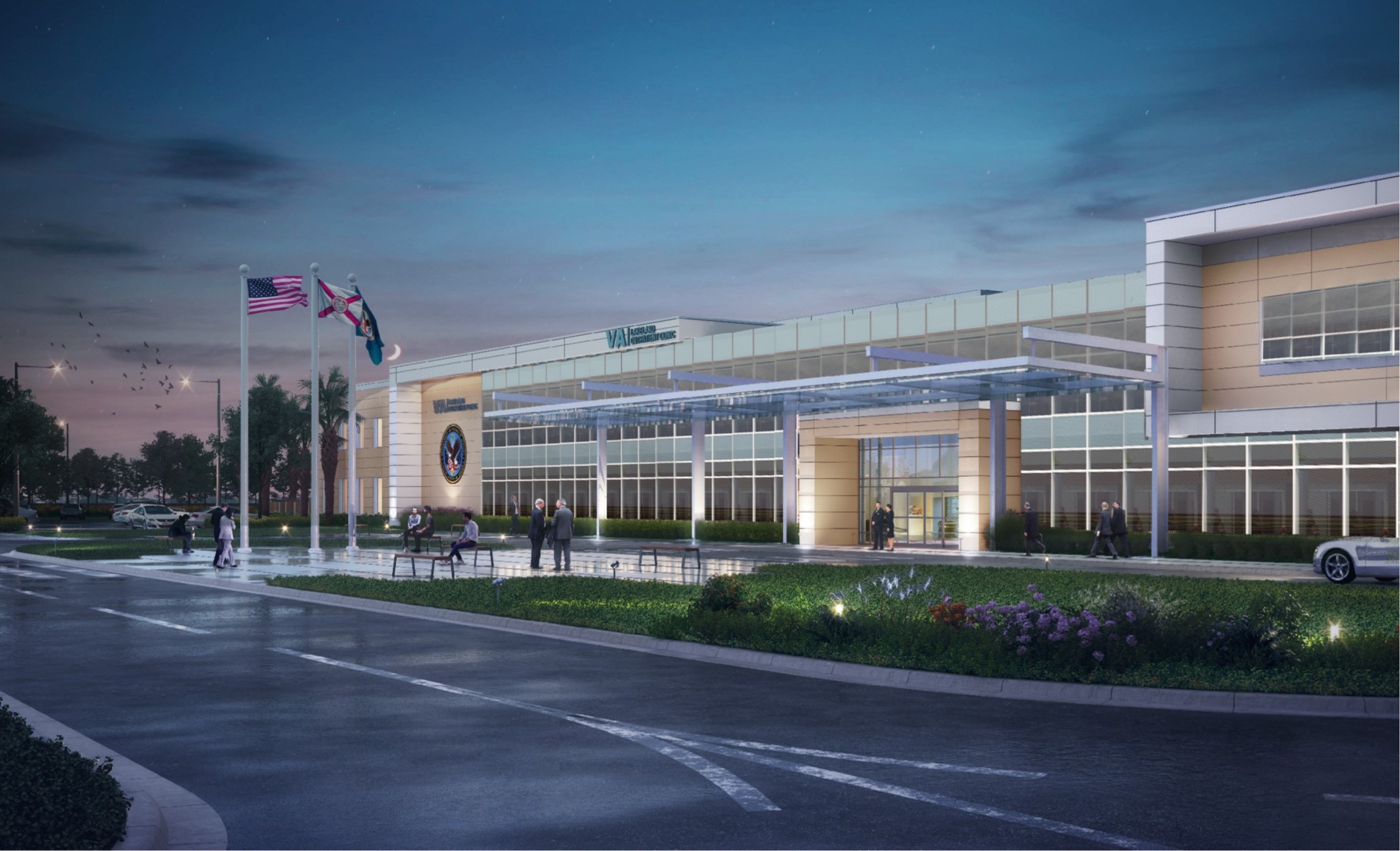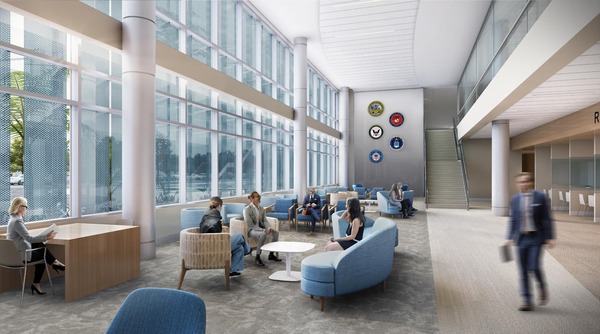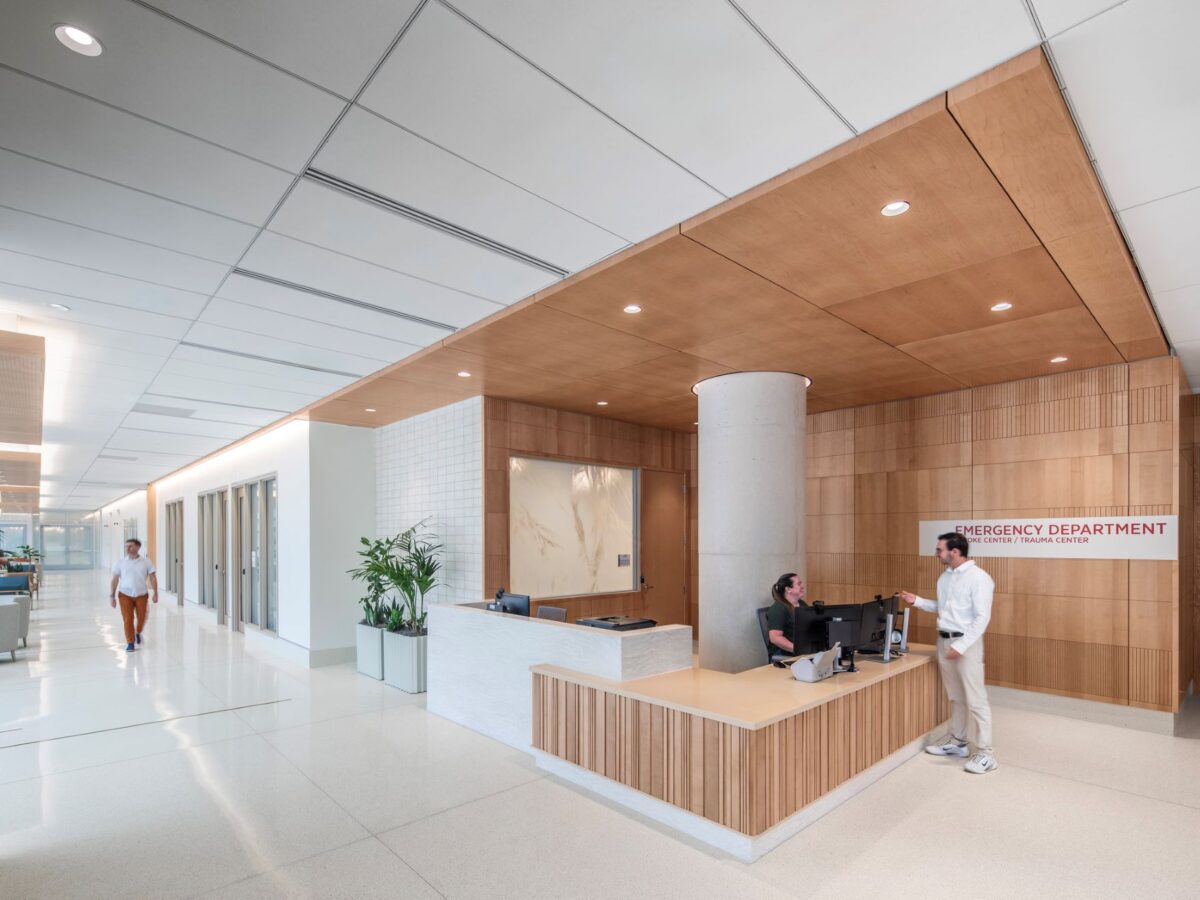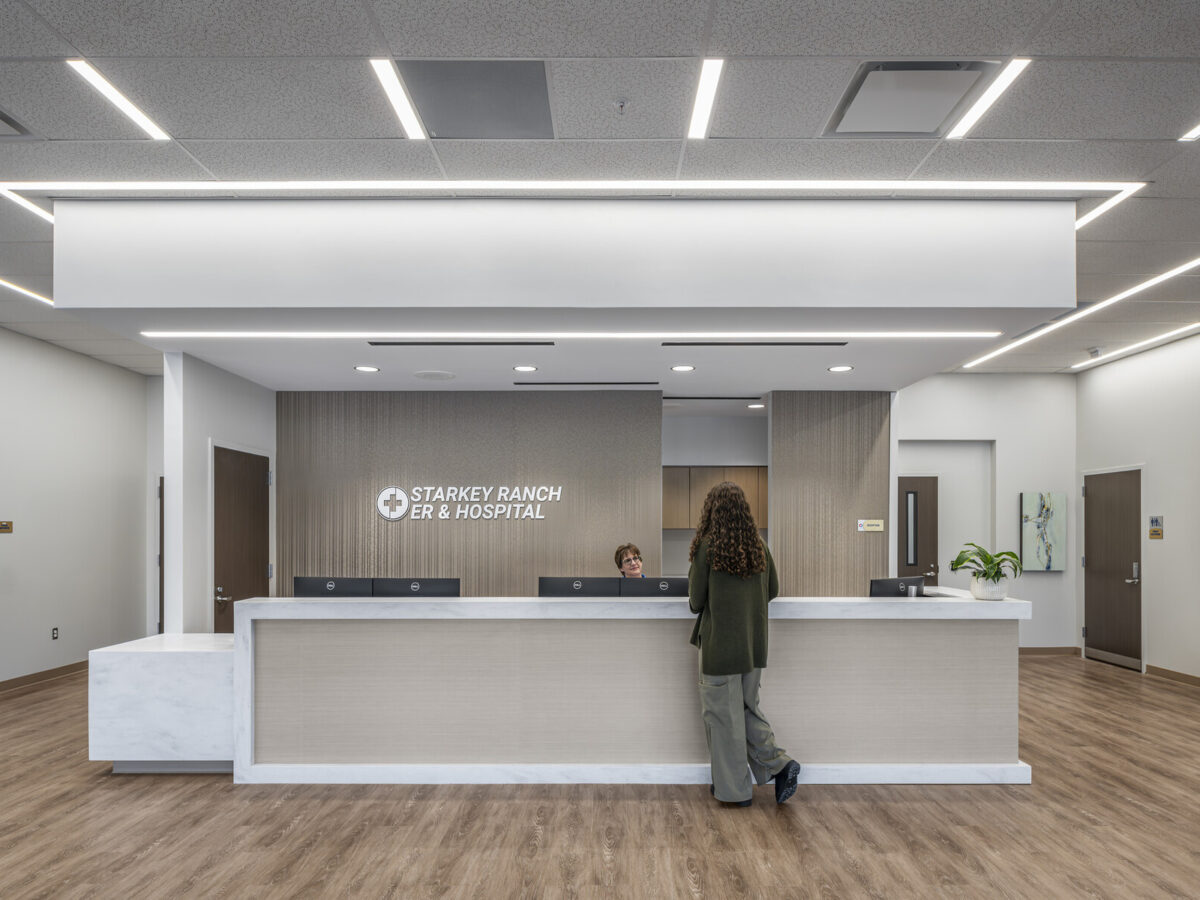Drawing on more than 50 years of healthcare architecture, planning, and engineering experience, Gresham Smith has closely observed healthcare design changes and program shifts aimed at enhancing vital aspects such as quality of care, the patient/family experience, safety, and access to care. The firm’s Federal Healthcare market, which includes the U.S. Department of Veterans Affairs (VA), has reflected these transformations over the past decade, especially with its shift toward outpatient care and specialty programs.
The Federal Healthcare program at Gresham Smith, led by Mike Neuser, a senior vice president in the firm’s Healthcare market, is dedicated to actively pursuing, securing, and executing projects for the VA. As the largest integrated healthcare system in the nation, the VA has developed a comprehensive set of design guidelines and standards to help facilitate the design and construction processes within its facilities.
To delve deeper into the collaboration dynamics with the VA and explore recent projects supported by the firm’s Federal Healthcare program, I recently spoke with three key healthcare leaders at Gresham Smith: Jim Langlois, Healthcare executive vice president; Pat Burke, Healthcare senior vice president; and Shannon Drake, Healthcare project executive.

Ashlan Santarelli: Can you provide a brief overview of the VA design guidelines and their scope? How do these guidelines contribute to standardizing design and patient-care models within the VA Healthcare System?
Jim Langlois: Managing over 1,700 healthcare facilities across the U.S., the VA’s Office of Construction & Facilities Management (CFM) recognized the need for greater control and continuity among the design projects to enhance healthcare delivery for veterans. In response, the Technical Information Library (TIL) was established in the late 1980s, serving as a repository for design information and standards used for their many design projects.
Among the resources housed in the TIL, the Design Guides play a crucial role. These guides consist of a series of documents that provide design standards for many of their clinical programs and include comprehensive explanations of design principles and contexts, narrative text descriptions and room templates. They serve as essential tools in the planning, design and construction phases of ongoing VA healthcare projects. Design professionals are mandated to apply these Design Guides to all new design and construction projects for the VA. These documents are constantly updated and new chapters are added over time.
More than a decade ago, I led teams for the first Polytrauma Design Guide and revamped several others, including the Mental Health Design Guide. There are currently 23 VA Design Guides that provide clear design standards, criteria and consistency across their facilities. This enables the VA to set expectations for planning and design. The fundamental purpose of the Design Guides remains unchanged since their inception—to improve the delivery of healthcare to veterans.
“There are currently 23 VA Design Guides that provide clear design standards, criteria and consistency across their facilities. This enables the VA to set expectations for planning and design.”
Ashlan: Since you have actively contributed to the development of VA design guidelines, can you elaborate on the government’s process for drafting or revising these guidelines?
Jim: When changes or new requirements in healthcare facilities emerged, CFM recognized the necessity to update or create Design Guides. During my involvement, my firm had experience with the specific care program and had collaborated extensively with Veterans Health Administration (VHA) division leadership, program directors and technical experts from the VA.
This collaborative effort typically engaged more than 30 architecture and engineering professionals. The process comprised multiple intricate steps, encompassing care models, conceptual planning, architectural and engineering considerations, and detailed building products information that contributed to the final document.
The work began with defining the shifts in the healthcare delivery requirements, often in response to evolving healthcare trends such as war-related injuries, the rise of chronic diseases or advancements in technology. Early discussions with VHA leadership were pivotal, focusing on care approaches, planning philosophy and the care program’s priorities. These meetings were enlightening, centering on the underlying philosophy of caring for the veteran rather than solely focusing on the built facility.

Ashlan: How do the VA’s design guidelines compare to the standards or design guides established by other healthcare clients within our portfolio?
Pat Burke: It’s crucial to step back and reflect on why systems develop design guidelines in the first place. The intended purpose of these guidelines varies across institutions, so by nature will set up differences. For example, many institutions look to guidelines to establish consistent methods for conveying their brand images, while others might prioritize the user experience, expanding on guidelines that address image-related aspects.
The obvious example for both of these would be finish and signage standards, but operational influences on design will begin to appear. Some design standards focus on ensuring similarity in key spaces. In healthcare systems, for instance, standardization of patient rooms or operating rooms is common across facilities. This standardization expedites the design process, minimizes staff perception that some facilities may be favored, and supports the consistent delivery of care throughout the system, regardless of the facility’s location.
What sets the VA apart is the comprehensive nature of its standards. From designing individual room types, finishes, equipment layouts, and engineering systems to standardizing care delivery, such as the Patient Aligned Care Team (PACT) model, the VA ensures that veterans receive the same high-quality care across the country. The VA also welcomes current design thinking to challenge existing standards when improvements are possible. Unlike some systems that rigidly enforce standards, potentially missing opportunities for continuous improvement, the well-thought-out standards of the VA establish procedures for carefully considering exceptions when the benefits are clear.
“What sets the VA apart is the comprehensive nature of its standards… The VA ensures that veterans receive the same high-quality care across the country.”
Ashlan: In what ways could our healthcare system clients leverage VA design guidelines to guide the development of their own facility standards or designs?
Pat: The VA first identified the desired care delivery approach and then created standards to ensure that designs aligned with that model. The VA standards build incrementally upon that, from standardizing functional relationships to layouts of equipment and utilities in their most typical spaces. Some clients lack the same level of clarity in defining the purpose behind their standards; instead, their standards may simply summarize past practices.
I wouldn’t necessarily advocate any system outright adopting the VA’s standards, but they could consider them as a guiding precedent for updating their own. Importantly, this approach ensures a clear understanding of the purpose and vision behind the standards, clarifying why they exist and how they should be applied to recreate their own set of standards.

Ashlan: Gresham Smith currently has two developer-led VA Community-Based Outpatient Clinics under construction, with plans for several more this year. How did the design of these clinics incorporate insights from VA design guidelines?
Shannon Drake: The design of healthcare facilities, such as outpatient clinics, is significantly influenced by the VA’s guidelines, which are crucial in tailoring these spaces to meet the distinct requirements of veterans and adhere to healthcare design best practices. These guidelines address a comprehensive range of considerations, spanning architectural, engineering, environmental, operational and safety aspects, irrespective of whether the facilities are leased or owned.
For the two clinics currently under construction, key areas influenced by the design guidelines include accessibility and patient flow, patient-centered design, technology integration, flexibility for future expansion and sustainability.
“I wouldn’t necessarily advocate any system outright adopting the VA’s standards, but they could consider them as a guiding precedent for updating their own.”
Ashlan: A distinctive element in the design of VA Community-Based Outpatient Clinics is the incorporation of the Patient Aligned Care Team (PACT). Can you provide a brief overview of the history of the PACT care model and also share your thoughts on integrating PACT principles into the design of other healthcare systems?
Shannon: The PACT model was introduced in the early 2000s by the VHA as part of the broad transformation initiatives geared toward elevating the quality and coordination of care for veterans within the VA healthcare system. Its primary objective is to provide veterans with more patient-centered and comprehensive care through a team-based approach.
The success observed within the VA system has led to the exploration and adoption of similar care team models in other healthcare organizations and systems. This contributes to the broader trend toward team-based, patient-centered care in the United States and globally. Key PACT design features that our clients might consider for their upcoming projects include off-stage central workstation areas for caregivers, separate patient and caregiver circulation, and exam rooms designed to accommodate a variety of specialties, allowing patients to remain in one room for assessments by different providers.

Leveraging Expertise for Value
Ultimately, Gresham Smith’s understanding of healthcare design drivers and their impact on patients, staff, facility operations, facility life-cycle costs, and quality of care stands as a key factor in our 50-plus years of success and high owner retention. This expertise not only provides advantages for our federal clients but also plays a crucial role in shaping patient-centered and mission-driven decision-making in our partnerships with other healthcare system clients. These projects hold considerable value, the greatest of which is the knowledge that our work aids in serving and enhancing the experiences of veterans across the nation.
For more information about Gresham Smith’s Federal Healthcare program, contact michael.neuser@greshamsmith.com or jim.langlois@greshamsmith.com.
















